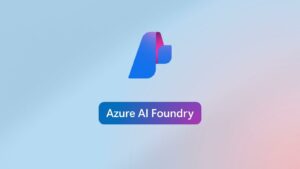Where to Start Oil and Gas IT Transformation (When Your Execs Ask about Emerging Tech)
Jon Sorensen Jr. – Partner, Strategic Programs
I consult and support a myriad of oil and gas companies experiencing tremendous growth organically as well as through mergers and acquisitions. Mid-sized organizations are special to me because the technology leaders must wear many hats and can have a noticeable impact with the right focus. The technology leadership teams scramble to keep up with a mix of business challenges and demands:
- Manage a flood of projects from production, mid-stream, drilling and completions and marketing business units wanting new tools and technology to increase efficiency while expanding services
- Support day to day operations by maintaining a plethora of legacy systems that may or may not survive beyond the flood of new projects, technology and mergers
- Integrate disparate data and systems between business units and organizations that frequently have very different infrastructure and support structures
And in the midst of all this daily churn, the Executive Leadership, Board, and Shareholders ask:
- How do we get the most value out of Automation and our Control Room?
- What are our plans for Artificial Intelligence and Machine Learning?
- How are we leveraging the Cloud and the new Serverless world?
- How do we use Business Intelligence and Analytics to make better/faster decisions?
- Where do Edge Devices and Digital Twins fit?
- What’s next??? What have you done for me lately?
Solving the challenge of “what is the future organization” is big – an elephant if you will. And if you want to eat said elephant, you must take the first bite. Most of the IT and business leaders I support cite this is the BIGGEST and most difficult bite – Where do I begin? How do I start my organization’s technology transformation? How do I define the problems I’m trying to solve with technology?
If you find that you, too can relate to this predicament, take a deep breath… and try these three steps:
- Establish a meaningful vision and common language in business terms
- Define the value of key initiatives, then confirm and align with leadership
- Develop a yesterday to tomorrow (your vision) roadmap – with guiding principles to select and prioritize projects and other work
Establish a Meaningful Vision and Common Language in Business Terms
Setting IT performance goals is not the same as establishing a “meaningful vision.” The vision must be written and shared in a way that the business as well as the IT organization understands. The vision must confirm THE TARGET and THE DIRECTION and align and motivate people to get there.
You can leverage themes from the big oil and gas companies and state you plan to establish a “Field of the Future,” or “Digital Oilfield.” But these generic, pie-in-the-sky ideas may not be specific enough to create a sense of ownership or urgency for your team.
A different approach is to consider a future role or an evolved current role. Think of which roles and resources will be most impacted and benefit from transformation. For instance, as your organization continues to add more assets and leases, traditionally, your organization would add more Lease Operators to manage field activities. But instead of hiring Lease Operators linearly with growth, your organization wants to get the MOST out of fewer Operators; enabling them through technology to focus on exceptions versus EVERYTHING. So your meaningful vision could be “Establish a technology-based decision and management environment for the Lease Operator of the Future; equipped to focus on exceptions to standard functioning well sites and centralized tank batteries. More with less and safer.”
When defining your vision and speaking to joint technology and business teams, establish a common language made up of business terms. Translation or too much explanation of desired outcomes should not be required for any team member — new, old, business, technology, whomever. If eyes start rolling, thumbs twitching, or jaws clenching within seconds of discussing goals and plans… You lost ‘em.
Many organizations refer to their projects as the name of the software or technology they are implementing such as XSPOC, ATMOS, FDG, eMaint, Oracle. Rebrand projects to reflect outcomes:
- XSPOC Project
- Business Objective – Decrease Production Downtime via Advanced Oilfield Lift Analysis and Optimization
- New Project Name in Short – Well Downtime Reduction
- eMaint Project
- Business Objective – Standardize Work Order Workflows and Improve Field Tech Support Efficiency
- New Project Name in Short – Work Order Workflow Standardization
- ATMOS Project
- Business Objective – Improve Community Brand and Reduce Clean Up Costs via Pipeline Leak Detection System
- New Project Name in Short – Pipeline Integrity Intelligence
- Oracle Project
- Business Objectives – Consolidate Organizational Accounting Systems and Close Monthly Books 25% Faster
- New Project Name in Short – Month-End Close Acceleration
- FDG Project
- Business Objective – Decrease Lease Operating Expenses (LOE) and Improve Operational Efficiency
- New Project Name in Short – LOE Reduction
Define the Value of Key Initiatives then Confirm and Align with Leadership
If they don’t understand and buy into it, you shouldn’t be doing it.
Adopt a business case format and process then require all projects to be in the format and follow the process. Cost, benefit and cultural change and impact are key. What is the financial, time, and human investment required? Will external experts be required? What are the key metrics to monitor and manage and then be leveraged for determining direction? Have you considered the total cost of ownership including maintenance, upgrades and long-term support from IT, field operators and other functions?
Once the business case is clearly written, obtain key stakeholder alignment… where “key stakeholders” consist not only of the project participants and leadership but also executive leadership. If you can’t get an executive to sponsor the project, it’s probably not valuable enough to use precious resources. If the project doesn’t initially compete for funding approval, it will eventually compete against other shiny ideas or license to operate priorities. You must have a strong team and executive alignment to stick around and move forward.
Develop a Roadmap – with Guiding Principles to Select and Prioritize Work
Develop a yesterday to tomorrow (your vision) roadmap – with guiding principles to select and prioritize projects and other work.
Starting with “yesterday” in your roadmap shows the progress your organization has already made. “Yesterday” also establishes a baseline for measuring progress. Then include core business outcomes and corresponding milestones that span a three-year duration. Anything longer than three years is speculative given today’s rapid change in technology.
Your planned projects should fit neatly within your roadmap, illustrating what needs to be done by when, to accomplish your business objectives by the target milestones. The prioritization comes from your guiding principles.
- What are this year’s primary business objectives?
- What are the core business challenges and limitations?
- What are the relationships between outcomes and projects? What are the dependencies?
- What are your organization’s key differentiators?
Answers to these questions establish your guiding principles. The principles guide your initial portfolio of projects and prioritization as well as provide decision criteria for considering and adopting new projects and pausing or killing old ones. Decisions are based on shared principles versus “feelings” resulting in more cross-organizational alignment, support and forward movement.
For example, assume your organization is acquiring assets in the Permian Basin. You must integrate the new wells and centralized tank batteries (CTB) into your Supervisory Control and Data Acquisition (SCADA) system within three months of purchase. The region has limited availability of field technical resources. Your organization has very high safety expectations and record. Potential guiding principles:
- Business objective – growth via acquisition versus optimization
- Challenges and limitations – integrate assets within limited time and limited resources
- Relationships/dependencies – integration prior to automation
- Differentiator – Safety standards/record
You consider four projects; 1) Wellsite downtime reduction leveraging edge devices, 2) programmable logic control (PLC) programming standardization, 3) asset integration with SCADA, and 3) spill alarm support via video surveillance.
All projects are valuable to your organization. Due to limited resources you must prioritize. Considering your guiding principles, you recommend the following order:
- Asset integration with SCADA (must happen prior to additional automation and supporting few limited field techs)
- Spill alarm support via video surveillance (supports safety principle and allows a control center to provide remote assistance to limited field techs)
- PLC programming standardization (reduces need for field techs with different programming knowledge and reduces time for troubleshooting)
- Downtime reduction leveraging edge devices (should help well optimization and guiding principles state this comes after acquisition and integration activities)
Don’t be fooled… Prioritization decisions are usually never this simple. Many more factors normally exist. However, be mindful of the prioritization process. No matter the number of variables, it’ll help you focus.
What’s Next?
Now you know how to get off square one. Three essential steps are:
- Establish a meaningful vision in business terms,
- define the value of key initiatives and align with leadership, and
- develop a roadmap.
Still need support or coaching? Contact a trusted advisor. Sometimes you are too close to the details to see the big picture (and you’re not alone)! Determine who in your network has oil and gas IT transformation and emerging technologies experience. Share the three steps with your advisor and ask them to shepherd you through the define, align and roadmap process. Schedule a discovery workshop with Serverless Solutions! We can work together to get you, your team and your organization unstuck, aligned and moving forward.
Now go do it – follow the three steps then execute your first initiative and let us know how it goes! JS





